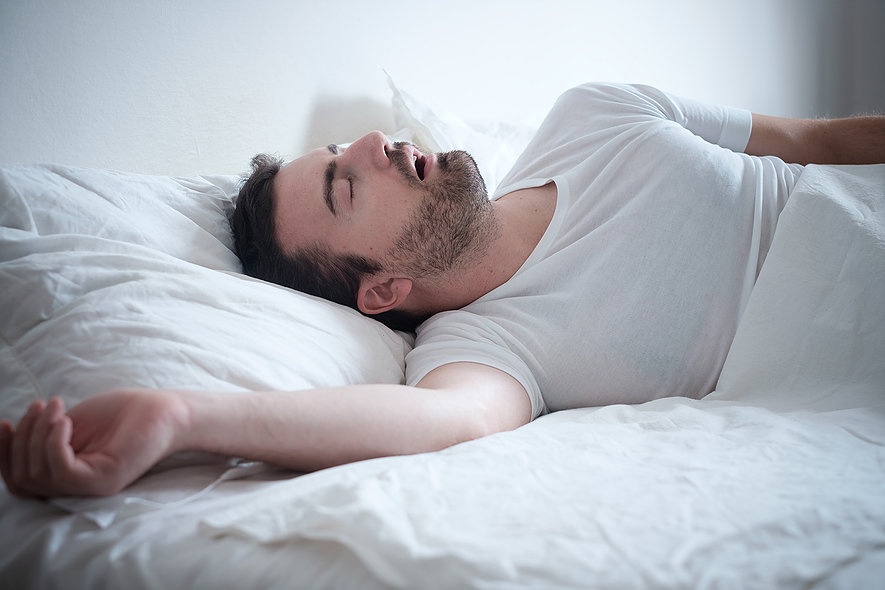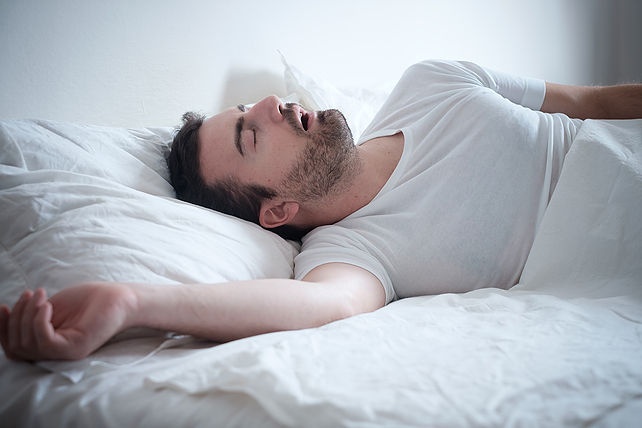What is Sleep Apnea?
Sleep apnea is a medical disorder in which breathing repeatedly stops and starts while a person is sleeping, sometimes hundreds of times, when the patient’s throat muscles intermittently relax and block his or her windpipe. This results in insufficient sleep. Left untreated, someone with the disorder functions with reduced alertness and may involuntarily fall asleep.[1]
Sleep apnea often goes undiagnosed. Doctors usually can't detect the condition during routine office visits. Also, no blood test can help diagnose the condition. Most people who have sleep apnea don't know they have it because it only occurs during sleep. A family member or bed partner might be the first to notice signs of sleep apnea.[2]
Sleep Apnea Affects Everyone - Plains, Trains and Automobiles
Sleep apnea is a public safety concern.
People that suffer from sleep apnea face a steep increase in chances of being part of a traffic accident. Due to the sleeplessness and lack of ability to concentrate that are associated with sleep apnea, sufferers are six times more likely to die in a car accident. The National Highway Traffic Safety Administration has stated that drowsy driving is responsible for, at the very least, 100,000 car accidents, 40,000 injuries, and 1,550 deaths per year.[3]
After recent fatal train crashes linked to sleep apnea, in January of this year the New York City Metropolitan Transit Authority announced that it was expanding its sleep apnea screening and treatment that program that it had started in 2015 and would become the first public transportation agency to systematically screen employees for obstructive sleep apnea and offer priority, specialized treatment to employees. The program would include screening and treatment for the Metro-North Railroad train engineers and conductors, Long Island Rail Road train engineers and conductors, New York City Transit subway train operators and conductors, and bus operators for New York City Transit and the MTA Bus Company. The MTA stated that the program would expand to nearly 20,000 employees.[4]
In August of this year, the Trump administration, through The Federal Railroad Administration and Federal Motor Carrier Safety Administration, announced that it was abandoning Obama administration plans to require sleep apnea screening for truck drivers and train engineers despite recommendations from the National Transportation Safety Board and former FRA officials.[5]
In September and in response to the Trump administration's decision not to implement the rulemaking, Senator Bob Menendez introduced a bill in the Senate, where it was cosponsored by Senators Cory Booker, Charles Schumer and Kirsten Gillibrand and Representatives Bill Pascrell, Jr. and Albio Sires introduced a companion bill in the House that would mandate sleep-apnea testing and treatment for both truck drivers and railroad engineers.[6]
Sleep Apnea Can Have a Direct Effect on Your Health
Over 50 years after the discovery of obstructive sleep apnea,[7] patients, families, employers, medical and dental professionals, and the government have recognized sleep apnea as a serious medical condition[8] that has to be addressed.
Did you know that
-
Sleep apnea is prevalent in as many as an estimated 18 million Americans alone? This means that approximately 1 in every 15 Americans or 6.62% of the total American population have a case of sleep apnea.
-
Two to four percent of all Americans have an undiagnosed case of sleep apnea? This means that approximately 1 in 50 individuals have undiagnosed sleep apnea.
-
More than 263,000 children per year undergo tonsillectomies? Most of these operations are performed due to the presence of sleep apnea in the children that is caused by the tonsils obstructing their air way.
-
A bed mate of a person with untreated obstructive sleep apnea can lose a serious amount of sleep? Due to the breathing and gasping of the apnea sufferer, the bed mate loses up to an hour per night of sleep.
-
People that have an untreated case of sleep apnea face a risk of stroke that is four times as likely as those who are not afflicted? Untreated sleep apnea sufferers are also three times as likely to have heart disease.
-
Roughly half of all hospital patients that have a case of hypertension are also afflicted with sleep apnea? Conversely, around half of all sleep apnea sufferers face a diagnosis of hypertension.
-
According to the National Commission on Sleep Disorders Research, approximately 38,000 deaths occur on an annual basis that relate to cardiovascular problems that in one way or another are connected to sleep apnea? These problems include high blood pressure, hypertension and stroke, among others. An estimated six million American residents suffer from sleep apnea that is moderate to severe and may necessitate a late-night visit to the emergency room. Unfortunately, a great many people do not, as previously mentioned, even realize that they suffer from sleep apnea. This number is somewhere around 500,000 individuals.[9]
-
In a five-year study of nearly 11,000 people, those with obstructive sleep apnea had a higher risk of sudden cardiac death. At greatest risk were those aged 60 and older with moderate to severe apnea (20 episodes an hour). When you have obstructive sleep apnea, “not only are you likely to wake up with a headache and fall asleep during the day, but you’re also at risk of dying suddenly,” says cardiologist Bruce Wilkoff, MD.[10]
If left untreated, sleep apnea can result in a growing number of health problems, including:
-
high blood pressure,
-
stroke,
-
heart failure, irregular heartbeats, and heart attacks,
-
diabetes,
-
depression,
-
worsening of ADHD, and
-
headaches[11]
This Blog
As Zig Ziglar said, the first step in solving a problem is to recognize that it does exist.
The goal of this blog is to create a forum for news, discussion, stories, ideas and contributions to help educate patients, families and employers about sleep apnea, how to have it diagnosed, and how to determine the best treatment for it.
The HomeSleep Team
-----
[1] http://www.mta.info/news/2017/01/23/mta-expands-sleep-apnea-program-systemwide-becomes-first-public-transportation.
[2] https://www.nhlbi.nih.gov/health/health-topics/topics/sleepapnea/.
[3] https://www.sleepdisordersguide.com/article/sleep-disorders/sleep-apnea-statistics-the-statistics-of-sleep-apnea.
[4] http://www.mta.info/news/2017/01/23/mta-expands-sleep-apnea-program-systemwide-becomes-first-public-transportation.
[5] https://apnews.com/ac5ac5c34bf64a09af0a0678e0823ff6.
[6] http://www.truckinginfo.com/channel/fleet-management/news/story/2017/09/capitol-hill-dems-backing-sleep-apnea-bill.aspx.
[7] https://www.ncbi.nlm.nih.gov/pmc/articles/PMC2413168/.
[8] http://www.mayoclinic.org/diseases-conditions/sleep-apnea/basics/complications/con-20020286.
[9] https://www.sleepdisordersguide.com/article/sleep-disorders/sleep-apnea-statistics-the-statistics-of-sleep-apnea.
[10] https://health.clevelandclinic.org/2017/06/why-sleep-apnea-raises-your-risk-of-sudden-cardiac-death/.
[11] https://www.webmd.com/sleep-disorders/sleep-apnea/sleep-apnea.








